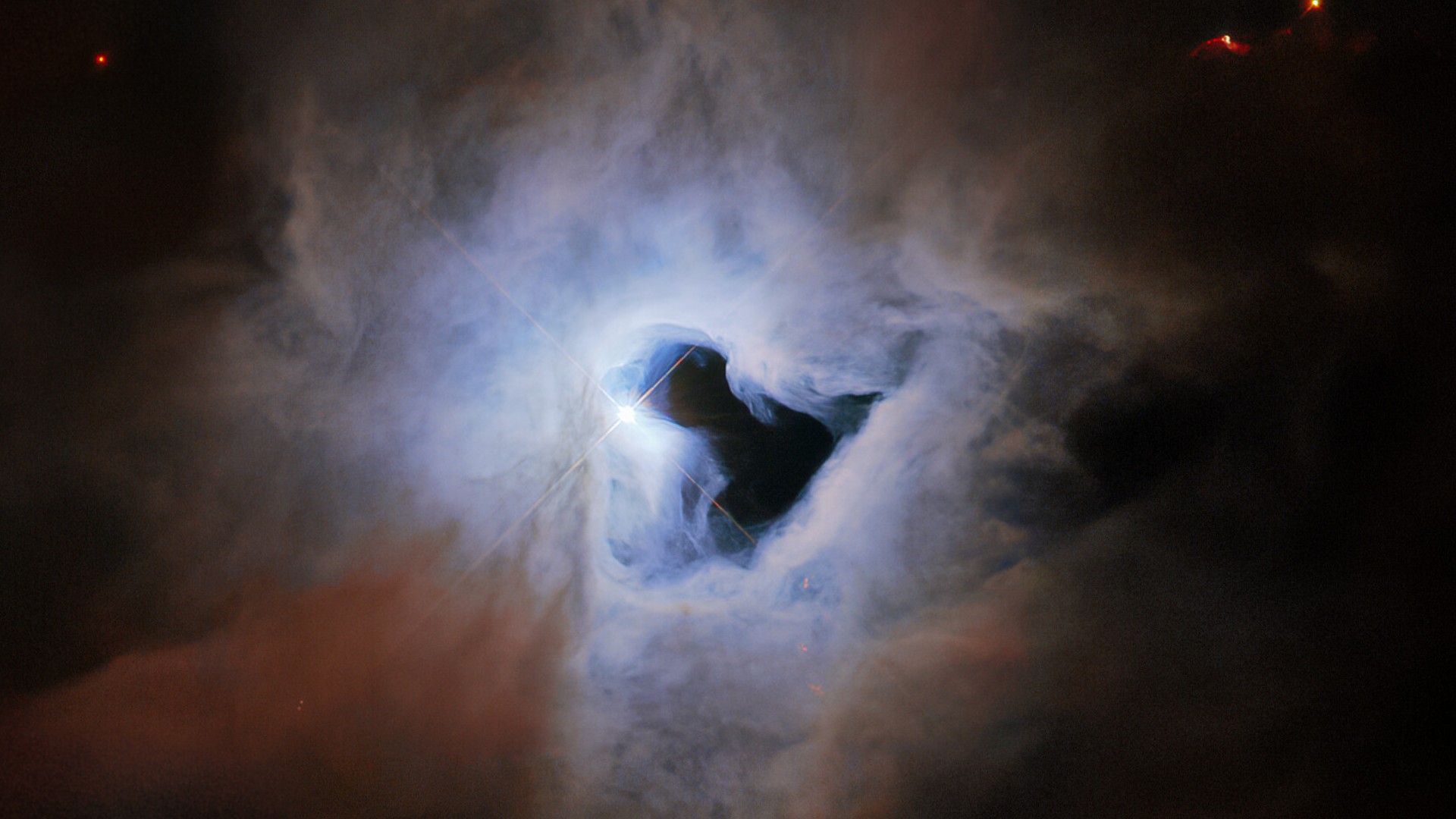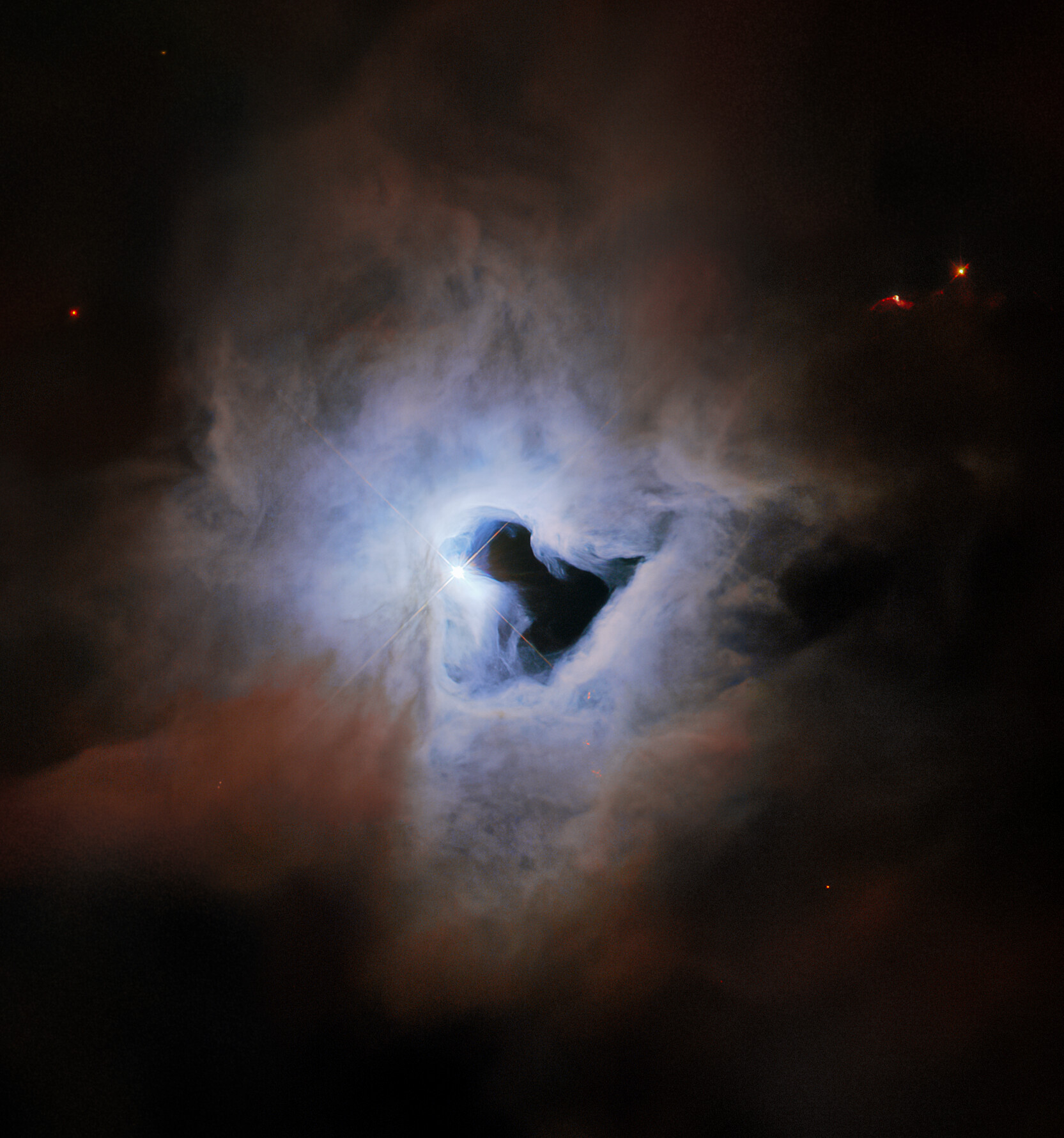Hubble telescope peeks through 'cosmic keyhole' in stunning photo
Hubble glimpses a mesmerizing nebula in Orion with a very distinctive feature.

It's not everyday that you can peek through a keyhole in the cosmos, but Hubble did just that — and it didn't even realize it.
A new photo of the reflection nebula NGC 1999 taken by the Hubble Space Telescope and released by NASA and the European Space Agency (ESA) on Oct. 24 shows a "peculiar portrait" of the swirling cloud of gas and dust. The nebula is a relic of a star's formation, V380 Orion, which can be seen in the center of the image, according to an ESA statement that accompanied the image.
The most distinctive feature of the photo, however, is the dark void in the heart of the nebula shaped like a keyhole.
Related: Hubble Space Telescope shows Webb a thing or two with spectacular new photo
When the nebula was first imaged by Hubble in 1999, it was believed that the dark central region was something known as a "Bok globule." These globules are cold clouds of gas, dust, and other molecules that are so dense that they block any light from passing through. It was only after subsequent observations of the nebula that astronomers learned that the dark region was actually empty space. At the moment, the origin of this keyhole feature isn't known.
The nebula is illuminated from the inside by the newborn star V380 Orion, and the nebula itself is actually the leftover material from the star's formation. The star is white in color owing to the intense heat of its surface — roughly 18,000 degrees Fahrenheit (10,000 degrees Celsius), or twice the temperature of the sun — and it is estimated at 3.5 stellar masses.
The nebula is close to the Orion Nebula, located about 1,500 light-years away, in an active star-forming region of the Milky Way. It is also famous for its proximity to the first Herbig-Haro object ever discovered, which is just outside of the image frame, according to the space agencies. (Herbig-Haro objects are relatively short-lived jets of ionized gas shot out from very young stars.)
Get the Space.com Newsletter
Breaking space news, the latest updates on rocket launches, skywatching events and more!

The new image was created using archival data from Hubble's Wide Field Planetary Camera 2, which uses a mix of ultraviolet, visible, and near-infrared sensors to create the image of the nebula we see. The infrared sensor is arguably the most important when looking at nebulae, since Hubble's other sensors cannot see past the clouds of dust to the stars within or behind the nebula.
This ability for infrared light to pass through clouds of gas and dust is what makes the James Webb Space Telescope such an important instrument, since it's infrared camera is much more sensitive than Hubble's, and has already revealed dazzling images of famous nebulae like the Pillars of Creation in the Eagle Nebula.
You can find John on Twitter at @thisdotjohn. Follow us on Twitter @Spacedotcom and on Facebook.
Join our Space Forums to keep talking space on the latest missions, night sky and more! And if you have a news tip, correction or comment, let us know at: community@space.com.
John is a science and technology journalist and Space.com contributor. He received his B.A. in English and his M.A. in Computer Science from the City University of New York, Brooklyn College, and has bylines with TechRadar, Live Science, GamesRadar, and other publications. You can find him on Bluesky at @johnloeffler.bsky.social or seeking out dark sky country for spectacular views of the cosmos.









